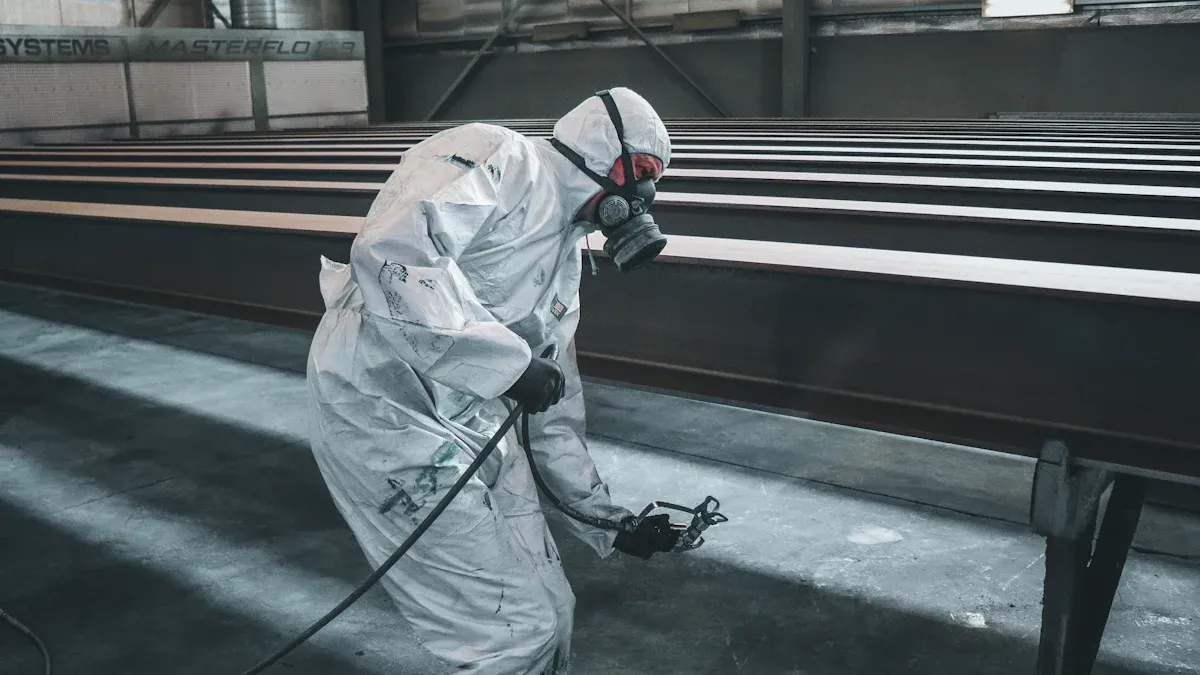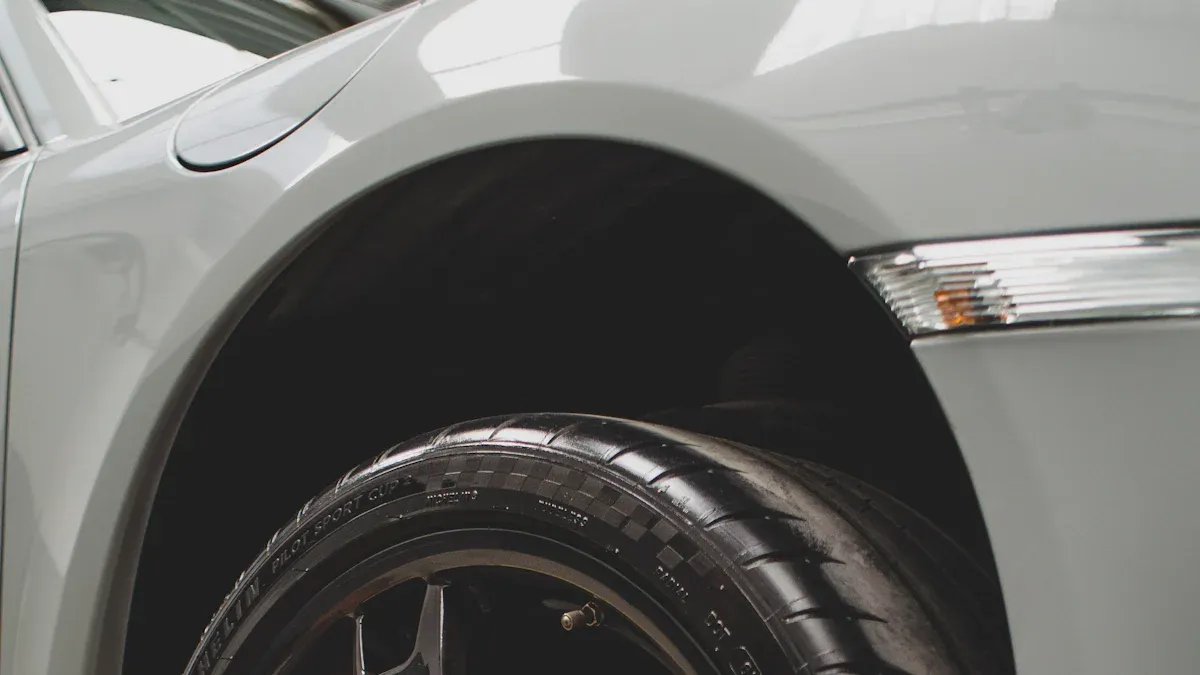
TAC Coating stands out as a revolutionary advancement in automotive manufacturing. This thin-film technology, often applied using CVD Coating methods, enhances the performance and lifespan of components. You’ll notice its impact in areas like wear resistance, heat management, and surface protection. By adopting TAC Coating, manufacturers achieve superior quality and reliability in automotive parts.
Key Takeaways
- TAC Coating makes car parts stronger, so they last longer. This means fewer fixes and less money spent.
- The coating protects parts from rust and chemicals. It helps parts work well even in tough conditions.
- TAC Coating helps cars run better by lowering friction and heat. This helps cars use less fuel.
Benefits of TAC Coating in Automotive Manufacturing

Enhanced Durability and Longevity
TAC Coating significantly increases the lifespan of automotive components. When applied, it forms a protective layer that reduces wear and tear caused by friction. This means parts like gears, pistons, and bearings can withstand heavy use without breaking down. You’ll notice fewer replacements and repairs, which saves time and money. The coating also helps maintain the structural integrity of components, even under extreme conditions. By using TAC Coating, manufacturers ensure that vehicles remain reliable for longer periods.
Resistance to Corrosion and Chemicals
Automotive components often face harsh environments, including exposure to moisture, salt, and chemicals. TAC Coating acts as a shield, preventing rust and chemical damage. For example, exhaust systems and engine parts coated with this technology resist corrosion, even in humid or salty conditions. This resistance ensures that parts perform consistently and safely. You can trust TAC Coating to protect critical components, keeping vehicles in top condition.
Improved Component Performance
TAC Coating enhances the overall performance of automotive parts. Its smooth surface reduces friction, which improves efficiency and reduces energy loss. For instance, coated engine parts operate more smoothly, leading to better fuel efficiency. The coating also helps manage heat, ensuring that components don’t overheat during operation. With TAC Coating, you get parts that perform better and contribute to the overall efficiency of the vehicle.
Sustainability Advantages of TAC Coating

Eco-Friendly Materials and Processes
TAC Coating uses materials and processes that prioritize environmental safety. Manufacturers often rely on coatings made from non-toxic and recyclable substances. This approach reduces the risk of harmful emissions during production. You’ll find that these materials align with global efforts to minimize the environmental footprint of industrial activities. Additionally, the application process for TAC Coating often involves advanced techniques that limit waste. By choosing this coating, you support a manufacturing method that values both performance and the planet.
Reduction in Waste and Energy Usage
One of the standout benefits of TAC Coating is its ability to reduce waste. The precision of its application ensures that only the necessary amount of coating is used. This minimizes excess material and lowers disposal needs. Furthermore, the coating process often requires less energy compared to traditional methods. For example, some techniques operate at lower temperatures, which saves energy and reduces greenhouse gas emissions. When you consider these factors, it’s clear that TAC Coating contributes to a more efficient and sustainable production cycle.
Contribution to Greener Manufacturing Practices
TAC Coating plays a vital role in promoting greener manufacturing practices. Its durability reduces the need for frequent replacements, which cuts down on resource consumption. You’ll also notice that vehicles with TAC-coated components tend to have better fuel efficiency, indirectly lowering their carbon footprint. By integrating this technology, manufacturers can meet stricter environmental regulations while delivering high-quality products. TAC Coating represents a step forward in creating a balance between industrial growth and environmental responsibility.
Innovation Driven by TAC Coating
Advanced Component Designs
TAC Coating opens the door to innovative designs for automotive components. You can create parts with thinner, lighter structures without sacrificing strength or durability. This coating allows engineers to experiment with advanced shapes and materials, improving both functionality and aesthetics. For example, lightweight engine parts coated with TAC Coating can reduce the overall weight of a vehicle, enhancing fuel efficiency. By enabling these cutting-edge designs, TAC Coating helps manufacturers stay ahead in a competitive market.
Cost and Time Efficiency in Production
TAC Coating streamlines the production process, saving both time and money. Its precise application reduces material waste, ensuring you only use what’s necessary. The durability of the coating also minimizes the need for frequent reapplications or repairs. Additionally, the coating process often integrates seamlessly into existing manufacturing systems, reducing downtime. With TAC Coating, you can achieve faster production cycles and lower operational costs, making it a smart choice for manufacturers aiming to optimize resources.
Enabling Next-Generation Automotive Technologies
TAC Coating plays a crucial role in the development of next-generation automotive technologies. Electric vehicles (EVs), for instance, benefit from coated components that improve battery efficiency and thermal management. You’ll also find that autonomous vehicles rely on sensors and cameras protected by TAC Coating, ensuring consistent performance in various conditions. By supporting these advancements, TAC Coating helps shape the future of the automotive industry, paving the way for smarter, more efficient vehicles.
TAC Coating has transformed automotive manufacturing by enhancing durability, promoting sustainability, and driving innovation. You benefit from components that last longer, reduce waste, and support cutting-edge technologies. This coating not only improves today’s vehicles but also paves the way for future advancements. By adopting TAC Coating, you contribute to a smarter, greener automotive industry.
FAQ
What is TAC Coating made of?
TAC Coating typically uses advanced materials like titanium, carbon, or ceramic compounds. These materials enhance durability, reduce friction, and resist corrosion in automotive components.
How does TAC Coating improve fuel efficiency?
TAC Coating reduces friction in engine parts. This allows components to move more smoothly, which decreases energy loss and improves overall fuel efficiency.
Is TAC Coating environmentally friendly?
Yes, TAC Coating uses eco-friendly materials and processes. It minimizes waste, reduces energy consumption, and supports sustainable manufacturing practices, making it a greener choice for automotive production.


